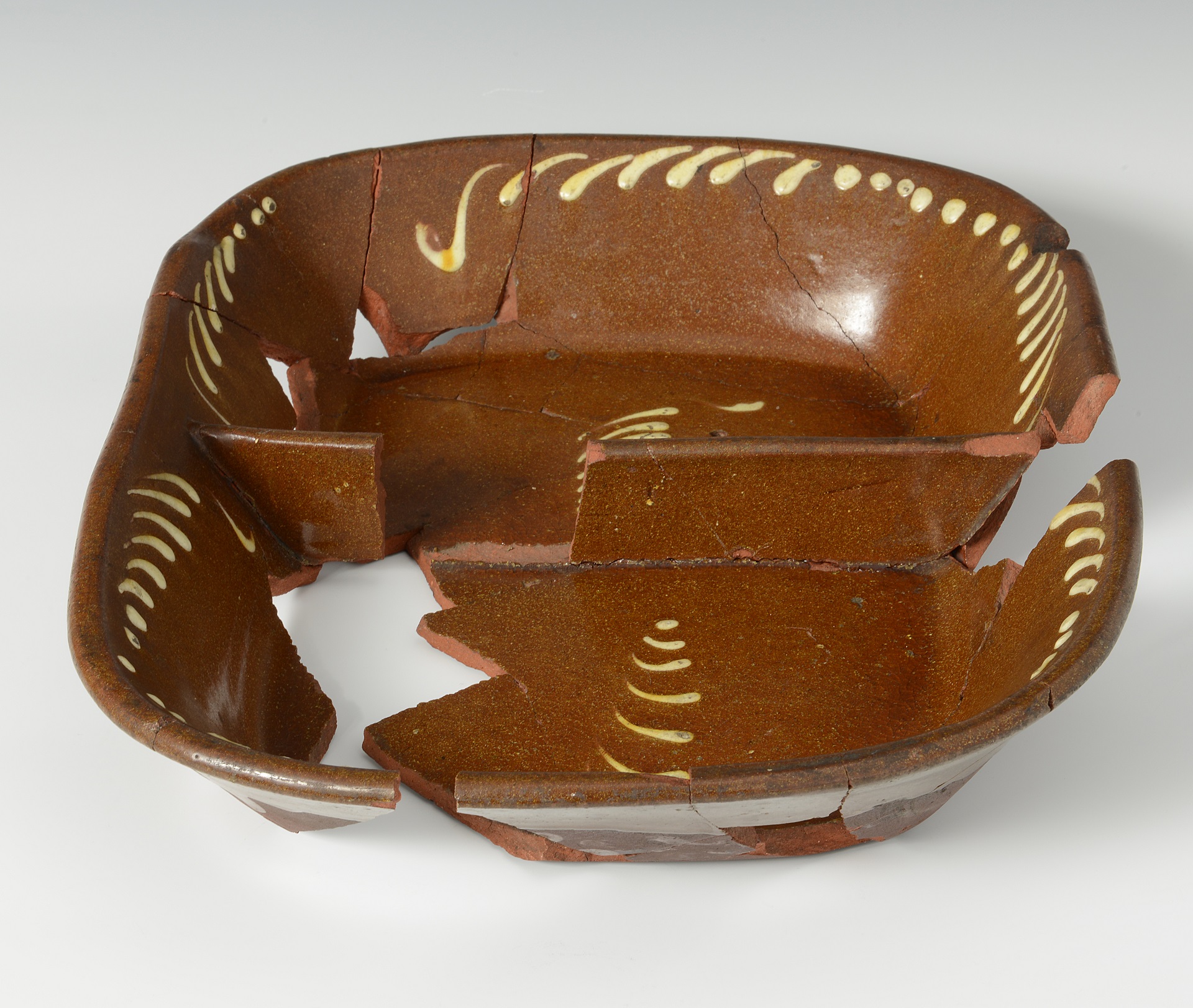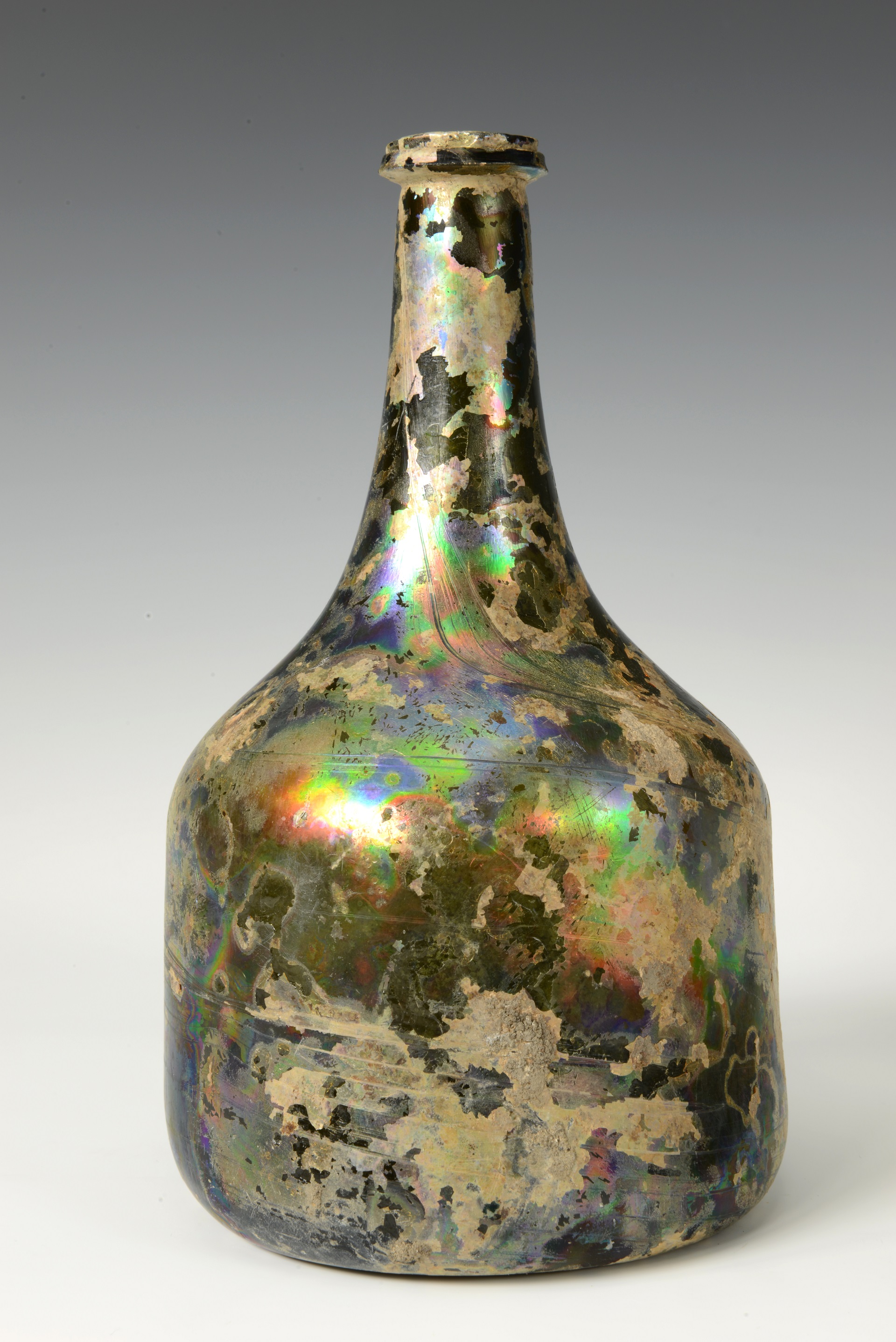Post-Medieval
The collections from the medieval period highlight the dominance of Durham City. Later material reflects the wider County, as well as the City’s role as a centre for small industries such as the manufacture of mustard, carpets, organs and clay pipes.
The Museum’s collection of over 3000 objects spans from the Tudor and Stuart periods up to the beginning of the 19th century and includes everything from Civil War musket shot balls to a ceramic dish excavated from the house of Sir John Duck - Durham’s own Dick Whittington.
The excavation of Durham City sites, most notably Leazes Bowl and Claypath, has uncovered large-scale, comprehensive assemblages of both pottery and glass. Modern archaeological recovery techniques make these important sites for the study of both domestic and trade wares, and the huge quantity of glass from the Claypath excavations is of immense importance. Comprising over 100 bottles, it represents one of the largest collections of post-medieval domestic glass in the country and is of central importance to future archaeological research in this field. It also shows how important inns were in Durham in the 17th and 18th centuries.
Durham City Survey
The museum holds the archives and finds relating to the Durham City Survey, providing an excellent resource and reference point for future research into both Durham in particular, and urbanism in general.
River Wear Assemblage
The Museum of Archaeology has a number of objects from the Durham River Wear Assemblage (DRWA) on display. This assemblage comprises over 13,500 small finds recovered by underwater archaeologist Gary Bankhead from the riverbed in Durham City between 2008 and 2017. These represent the largest collection of late and post-medieval finds in the North of England and are a unique regional and national resource.
You can find out more about some of the objects in our online exhibition Hidden Stories from the River Wear.

A reconstructed post-medieval divided dish, found in Sir John Duck’s House.

One of the many complete 18th century glass bottles which were found during excavations of Claypath.


/prod01/channel_4/things-to-do/media/things-to-do/museum-of-archaeology/MoA-banner-1920X400.jpg)